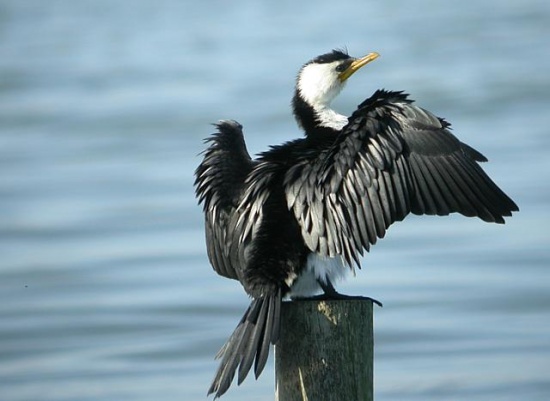- Phalacrocorax melanoleucos
Identification
Photographed on the coast of Victoria, Australia.
The Little Pied Cormorant is one of the most common of Australia's waterbirds, occurring on water bodies of almost any size. It is entirely black above and white below. The face is dusky and, in adult birds, the white of the underside extends to above the eye. Immature birds resemble the adults except there is no white above the eye. The Little Pied Cormorant resembles the Pied Cormorant, Phalacrocorax varius, but is easily distinguished by its smaller size (50 - 60 cm in length) and proportionately shorter bill The Pied Cormorant also has an orange-yellow face patch and black thighs.
Distribution
Throughout Australia
Taxonomy
Habitat
The Little Pied Cormorant is at home in either fresh or salt water throughout Australia. It is often seen in large flocks on open waterways and on the coast, especially where large numbers of fish are present. On inland streams and dams, however, it is often solitary. The Little Pied Cormorant mixes readily with the similar sized Little Black Cormorant, P. sulcirostris.
Behaviour
Little Pied Cormorants feed on a wide variety of aquatic animals, from insects to fish. On inland streams and dams they turn to their most favoured food: yabbies (freshwater crayfish). These are caught by deep underwater dives with both feet kicking outward in unison. Other crustaceans are also taken, with shrimps being a large part of their diet in winter months. Little Pied Cormorants breed either in colonies or, less commonly, in single pairs. The nest is a flat platform of sticks, lined with green leaves and is usually placed in a tree. Both adults share in egg incubation and care of the three or four young.




